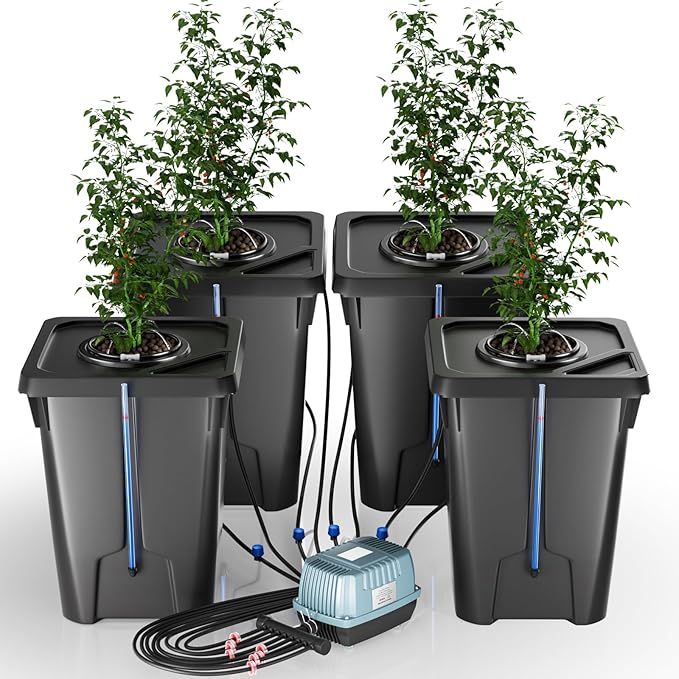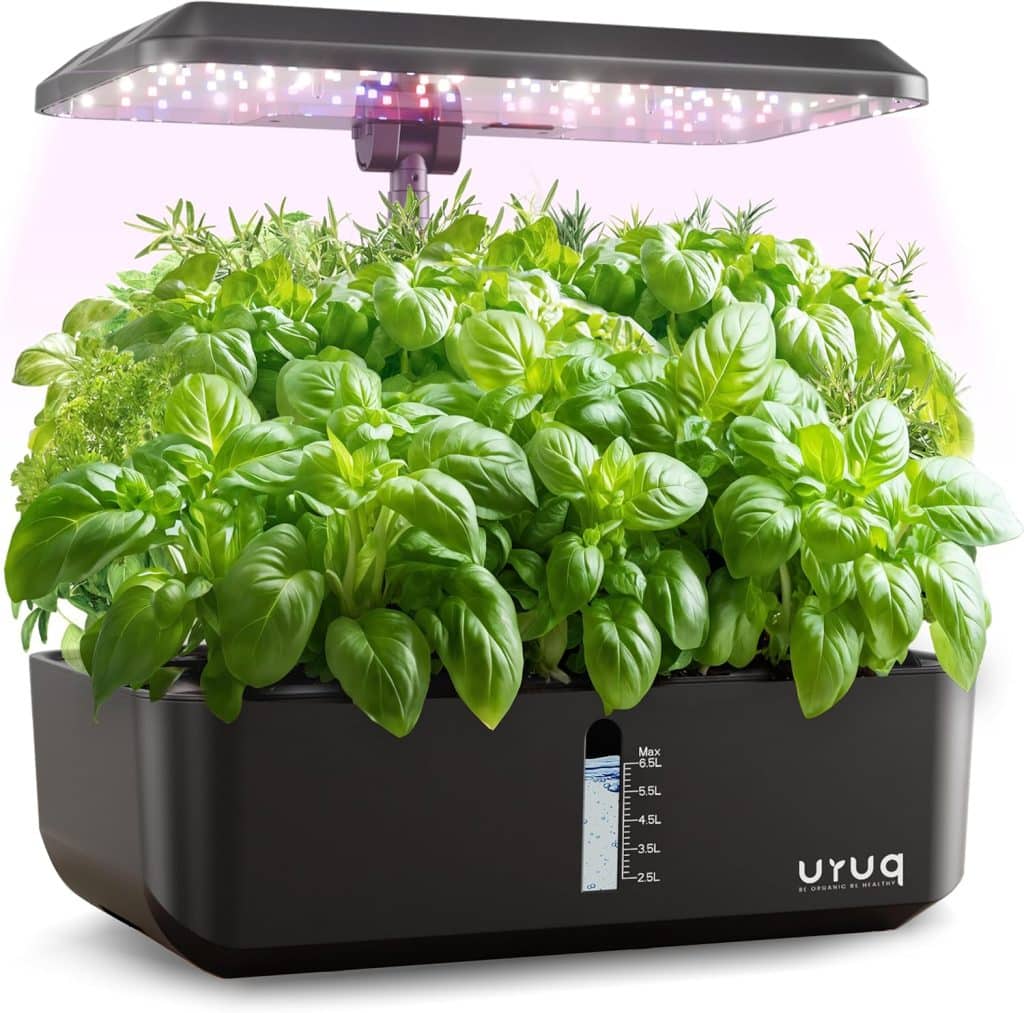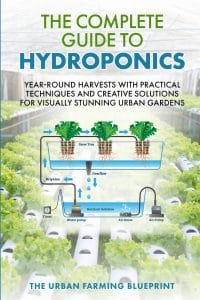Hydroponics is revolutionizing how we grow plants. By replacing soil with nutrient-rich water solutions, this innovative approach offers faster growth, higher yields, and the ability to cultivate crops in spaces where traditional gardening might not be possible. From urban apartments to arid regions, hydroponics enables food production where it was once unthinkable. Whether you’re a seasoned gardener or a curious beginner, hydroponics opens up a world of possibilities for efficient and sustainable food production. It’s also a fantastic way to engage with plant science, creating a controlled environment where plants thrive without the unpredictability of soil-based systems.
Hydroponics has grown beyond a niche hobby into a global movement. Commercial farms and home gardeners alike are exploring its benefits. Whether you’re looking to grow your own food, save water, or optimize space, hydroponics can help you achieve it. This guide will walk you through the essentials of hydroponic systems, giving you the knowledge to start your journey.
Types of Hydroponic Systems
Hydroponic systems are designed in a variety of ways, each catering to different growing needs and levels of experience. These systems vary in complexity, space requirements, and the types of plants they are best suited for. Some are ideal for beginners, while others are more advanced and require greater technical knowledge. Below are the most common types of hydroponic systems:
1. Deep Water Culture (DWC)

Plants are strategically placed in a hydroponic system where their roots hang directly into a nutrient-rich water reservoir. This setup allows the roots to remain submerged at all times, ensuring they are consistently exposed to the essential nutrients dissolved in the water. The nutrient solution typically contains a carefully balanced mixture of macronutrients like nitrogen, phosphorus, and potassium, along with micronutrients such as iron, calcium, and magnesium. These nutrients are vital for the plants’ growth and development, providing them with everything they need to thrive without the need for soil.
To further optimize plant health, the system includes air stones and pumps that generate bubbles, delivering a steady stream of oxygen to the roots. Oxygen is critical for the roots to absorb nutrients efficiently and to carry out respiration processes. By maintaining high levels of dissolved oxygen in the water, these systems prevent root rot and stagnation, which are common problems in traditional soil-based growing methods. The constant flow of air also ensures that the water remains aerated, reducing the risk of pathogens and maintaining a clean environment for the plants.
Pros:
- Simple setup with minimal moving parts.
- Low maintenance once established, making it beginner-friendly.
- Ideal for leafy greens and herbs like lettuce, spinach, and basil.
Cons:
- Limited to certain plant types that don’t require extensive support.
- Requires consistent oxygenation to prevent root rot.
- May face challenges in maintaining water temperature in warm climates.
2. Nutrient Film Technique (NFT)
In this system, a steady stream of nutrient-rich solution flows through a narrow, sloped channel, providing a continuous supply of water to the plant roots. The slant of the channel allows the roots to remain in constant contact with the nutrient solution, while also being exposed to air, which ensures they receive both the necessary nutrients and sufficient oxygen.
This dynamic flow promotes optimal nutrient absorption and root aeration, creating an environment that supports vigorous plant growth by preventing water stagnation and ensuring that the roots have access to the oxygen they need to thrive.
Pros:
- Highly efficient use of nutrients and water.
- Suitable for fast-growing plants like lettuce and strawberries.
- Modular design allows for easy expansion.
Cons:
- Susceptible to pump failures, which can dry out roots quickly.
- Not ideal for larger, fruiting plants due to root size limitations.
- Requires precise leveling for proper nutrient flow.
3. Aeroponics

In this system, plants are suspended in the air, with their roots exposed to a fine mist of nutrient solution. The mist is delivered directly to the roots, providing them with the essential nutrients they need for growth.
This method allows for maximum oxygen exposure to the roots, as they are not submerged in water, which promotes efficient nutrient uptake and healthy root development. The misting process also helps prevent root rot by keeping the roots well-oxygenated while still ensuring they receive the necessary nutrients for optimal growth.
Pros:
- Maximum oxygen exposure for roots promotes rapid growth.
- Allows for optimal nutrient absorption.
- Minimal water usage compared to other systems.
Cons:
- Complex and costly to maintain, requiring advanced technical skills.
- Misting nozzles can clog, disrupting nutrient delivery.
- Dependence on reliable electricity for misting cycles.
4. Drip Systems
In this system, nutrient solutions are supplied directly to the base of each plant via a drip line. The drip line releases a controlled amount of the nutrient solution at the plant’s root zone, ensuring that the roots receive a steady, precise supply of water and nutrients. This method helps reduce waste and ensures that each plant gets exactly what it needs for optimal growth.
By delivering the solution directly to the roots, the system minimizes the risk of water evaporation and nutrient imbalances, promoting healthier plants and more efficient resource use.
Pros:
- Scalable for small or large setups, making it versatile for home or commercial use.
- Works with a variety of plant types, including tomatoes, peppers, and cucumbers.
- Adjustable drip rates allow customization for different plants.
Cons:
- Risk of clogging in drip lines due to mineral buildup.
- Can waste water if the system is not properly calibrated.
- Requires regular maintenance to ensure even distribution.
5. Wick Systems
nutrients are drawn from a reservoir to the plant roots through a wick material. The wick, typically made of absorbent fabric or rope, pulls the nutrient solution from the reservoir and transports it to the base of the plant.
As the wick absorbs the solution, it delivers a steady supply of water and nutrients directly to the plant’s roots.
This simple method ensures that the plants have constant access to essential nutrients without the need for complex pumps or systems, making it an ideal choice for beginners or small-scale growers. The wick system also helps maintain proper moisture levels around the roots, supporting healthy growth.
Pros:
- Simple and low-cost, making it a great choice for beginners.
- No need for electricity, making it suitable for remote locations.
- Best for small, water-efficient plants like herbs and microgreens.
Cons:
- Limited to smaller plants with lower nutrient needs.
- Slower nutrient delivery compared to active systems.
- Not suitable for high-demand crops or large-scale setups.
6. Ebb and Flow (Flood and Drain)
In this system, the grow bed is periodically flooded with a nutrient solution at predetermined intervals, allowing the plant roots to soak up the nutrients. After each flooding cycle, the solution drains back into the reservoir, where it is recycled for the next cycle.
This method provides plants with a consistent supply of nutrients while ensuring that their roots are not constantly submerged, allowing them to access both water and oxygen. The cycling of the solution helps maintain optimal nutrient levels and prevents water stagnation, promoting healthier, more vigorous plant growth.
Pros:
- Encourages healthy root growth with alternating exposure to nutrients and oxygen.
- Suitable for a variety of plants, from vegetables to flowers.
- Adaptable for different setups and scales.
Cons:
- Requires precise timing and monitoring to avoid overwatering.
- Pumps and drains can clog, disrupting the cycle.
- May need additional components like timers for automation.
How Hydroponic Systems Work
At its core, hydroponics eliminates the need for soil by delivering a nutrient-rich solution directly to the plant roots. This setup provides plants with all the essential elements—oxygen, water, and nutrients—more efficiently, allowing for faster growth and better resource utilization.
Without the constraints of soil, plants can focus more on developing healthy roots and robust growth. The precise control over nutrient levels and environmental conditions also minimizes waste, leading to more sustainable gardening. Most hydroponic systems include the following components:
- Growing medium: Rockwool, clay pellets, or perlite to anchor the plants.
- Reservoir: Holds the nutrient solution, which is the lifeline for plant growth.
- Pump or delivery system: Circulates the solution to keep it fresh and oxygenated.
- Lighting: Often LED grow lights for indoor setups, mimicking sunlight.
- pH and nutrient monitors: Ensure optimal growing conditions, as plants are sensitive to imbalances.
Hydroponics offers enhanced control over critical environmental factors such as temperature, humidity, and light.
This level of precision allows growers to create the ideal conditions for plant growth, regardless of external weather conditions. By fine-tuning these variables, hydroponic systems can significantly increase yields and enable the cultivation of exotic or high-value crops that might be difficult to grow in traditional soil-based methods.
The system blends the best of both science and nature, providing a growing environment that is both straightforward for beginners and sophisticated enough for advanced agricultural experimentation. This balance of simplicity and precision makes hydroponics a powerful tool for modern farming.
Pros and Cons of Hydroponic Systems
Advantages
- Faster plant growth due to direct access to nutrients and oxygen.
- Higher yields in less space, making it ideal for urban gardening.
- Reduced water usage compared to soil-based gardening, as water is recycled within the system.
- No weeds or soil-borne pests, reducing the need for pesticides.
- Year-round growing potential with controlled indoor setups.
- Customizable systems to match your specific gardening goals.
- Opportunity to grow food in non-arable areas or indoors, addressing food security challenges.
Disadvantages
- Higher initial setup cost, especially for advanced systems.
- Dependence on electricity, which can be a risk during outages.
- Requires ongoing monitoring of pH and nutrient levels to avoid plant stress.
- Learning curve for beginners, particularly with more complex systems.
- Some systems, like aeroponics, demand high maintenance and technical expertise.
- Potential issues with waterborne diseases if the system is not well-maintained.
Choosing the Right System Based on Your Needs
hoosing the right hydroponic system depends on several factors, including your specific goals, available space, and experience level. Different systems offer various benefits, so it’s important to match the system to your needs.
For example, if you’re aiming for large-scale production, you might need a more complex setup, while beginners may prefer simpler, low-maintenance systems. The amount of space you have also plays a role—certain systems are better suited for compact areas, while others require more room to accommodate plants.
Your experience with growing and hydroponics will also determine whether you choose a system that requires minimal monitoring or one that offers greater control over growing conditions.
- Beginners: Start with a simple Deep Water Culture or Wick System to learn the basics. These systems are easy to set up and maintain, offering a gentle introduction to hydroponics.
- Intermediate Gardeners: Try NFT or Drip Systems for more versatility and scalability. These systems offer better control and are ideal for those ready to expand their skills.
- Advanced Growers: Experiment with Aeroponics for maximum efficiency and innovation. This system is perfect for tech-savvy gardeners who want to push the boundaries of plant growth.
Consider factors like:
- Budget: How much are you willing to invest in the initial setup and ongoing maintenance?
- Plant Types: Are you growing leafy greens, fruiting plants, or herbs?
- Space Availability: Do you have a small balcony, a spacious backyard, or an indoor grow room?
Additionally, think about your commitment to monitoring and maintenance. Systems like Aeroponics and NFT require more attention, while Wick Systems and DWC are more forgiving for beginners.
Internal Resources
Explore these helpful guides for deeper insights:
- Top 5 Hydroponic Systems for Beginners
- Deep Water Culture vs. NFT Systems: Which One to Choose?
- DIY Hydroponic System Guide
- Troubleshooting Common Hydroponic Problems
Recommended Products and Kits
If you’re ready to dive in, these top-rated systems are worth exploring:
- AeroGarden Harvest – A compact, all-in-one system perfect for beginners with minimal space.
- General Hydroponics Waterfarm – Ideal for growing larger plants with robust roots.
- Hydrofarm MegaGarden – A great option for small-scale hobbyists who want versatility.
- PowerGrow DWC System – Affordable and beginner-friendly, making it a great starting point.
- Click and Grow Smart Garden – Hassle-free gardening with smart features for automated care.
- Tower Garden FLEX – A vertical gardening system that maximizes space efficiency for small areas.
- VIVOSUN Hydroponic Grow Kit – Comprehensive kits for those looking to scale up operations.
These products not only provide a jumpstart for beginners but also serve as reliable options for experienced gardeners looking to expand their setups. Many kits come with user-friendly instructions, making them ideal for both novice and advanced users.
Conclusion
Hydroponic systems offer an exciting way to grow plants efficiently and sustainably, breaking traditional barriers of soil-based gardening. By understanding the different systems and choosing one that fits your needs, you can transform your gardening experience and cultivate thriving plants year-round.
Hydroponics is more than a gardening method—it’s a pathway to a greener, more self-reliant future. Whether you’re growing fresh herbs for your kitchen or aiming for a full-scale vegetable garden, hydroponics makes it possible. Ready to get started? Explore our guides and recommended products to turn your hydroponic dreams into reality!


